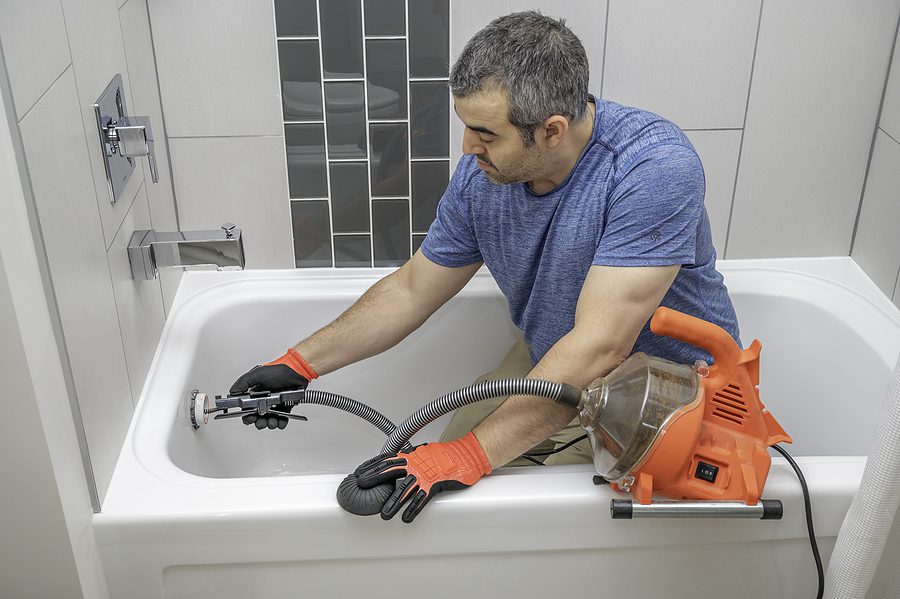
There is nothing that can ruin a fine dinner more than a clogged drain and an overflowed kitchen sink afterward. And nothing will ruin a morning shower more than standing ankle deep in sudsy water.
But, with a few basic tools and advice from the Day & Night Plumbing professionals, you can flush clogs and concerns down the drain.
Drain Clog Tools Everyone Should Own
Invest in these inexpensive but are a must for home owners to unclog toilets and drains: ·
- Plunger—a stout handle and larger rubber bell delivers the most force
- Snake—look for a 3/8- or 1/4-inch model that’s approximately 20 feet long
- Bucket or pail—any type works, as long as it fits under your drain
- Rubber gloves
- Flashlight
- Adjustable wrench
Action Strategies for Opening a Clogged Drain
Certain drain problems are plumbing issues, while others can be cleared with these steps:
Clear standing water
Eliminate standing water as soon as possible, it can breed mold, bacteria and insects in no time. Plus, you’ll need the space to add water later in flushing the drain, so removing it makes space for that.
Clear any visible obstructions and inspect garbage disposal
Whether it be unwanted hair or pieces of leftover food, don your rubber gloves and dispose of waste. If your garbage disposal is making a low humming noise, it is probably jammed.) Shut it down, unplug it and clear the obstruction by hand cranking the blades.)
Consider trying boiling water and salt or vinegar and baking soda
Dump half a cup of table salt down the drain and then pour boiling water down. Or maybe a cup of baking soda and a cup of vinegar, let it fizz for 15 minutes then pour boiling water down the drain.
Alternatively, you might attempt a cup of baking soda and half a cup of salt; let it sit for a couple of hours and flush with boiling water. If you need to, follow these procedures again before contacting a plumber.
Plunge it out
If boiling water and the mixtures above don’t do the trick, try plunging. First, plug the overflow hole of the tub or basin with a rag, or use fabric or a stopper to seal the second side of a double sink. This provides a tighter seal and applies the pressure directly at the clog. If the trap is still clogged, after a few vigorous attempts at plunging, flush the drain with warm water.
Clean and snake the P-trap
The P-trap is the curved portion of the drainpipe below the sink. Put a bucket or pail underneath to collect water or debris.
Loosen the slip nut on the trap arm and assembly and wiggle it out carefully. Clean the obstruction out and reinstall, but do not overtighten the slip nuts – it is only necessary to hand tighten and then turn a quarter turn with a wrench to secure.
Snake the drain
If you cannot see the clog upon the removal of the P-trap, begin snaking. Detach the P-trap to access the pipe’s “stub-out” and insert the tip of the snake into it. Secure the setscrew and rotate the snake clockwise down the drain. Continue to turn the snake until you feel resistance and feel it break. Snake it back out, reassemble the P-trap, and flush the newly opened line out with warm water.
Albuquerque Drains Clogged Still?
If those don’t do the trick to unclog your Albuquerque then it might be time to call Day & Night Plumbing for an appointment.
As one of Albuquerque’s oldest and Largest Carrier® dealer, we’ve serviced both the heating and air conditioning needs of homes and businesses in the Greater Albuquerque area since 2010.

